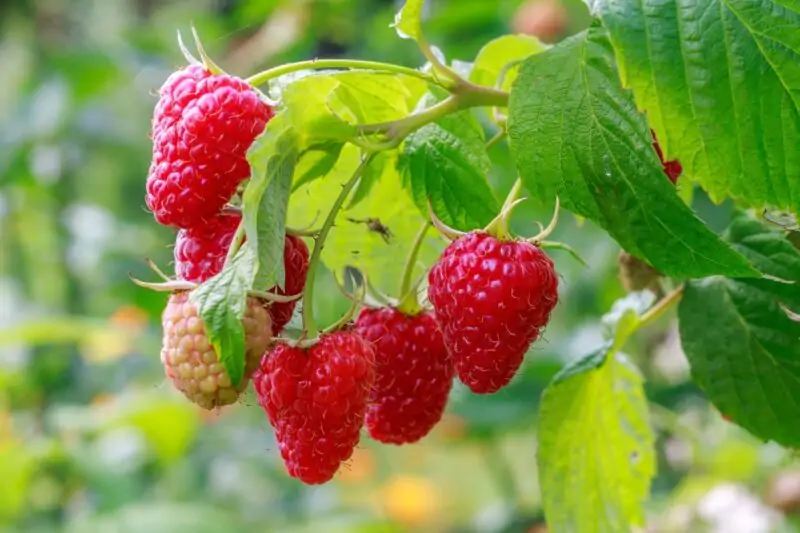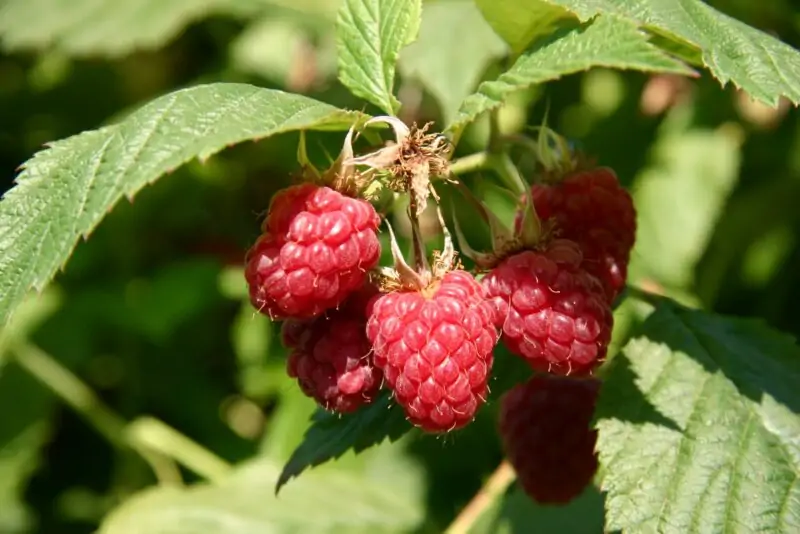A Comprehensive Guide on How to Grow Raspberries from Seed to Harvest

If you’ve ever wondered how to grow raspberries from seed, you’re in luck! With just a little bit of effort and some patience, you can produce your very own raspberry bushes that will provide delicious berries year after year. In this article, we’ll take you through each step of the process so that even if you’ve never grown anything before in your life (except maybe some moldy cheese in the back of your fridge), by the end, you’ll be ready to start growing juicy raspberries like a pro.
Why Grow Raspberries from Seed?
Firstly, let me tell you – fresh-picked homegrown fruit tastes amazing. There’s something truly magical about walking out into your backyard and plucking perfectly ripe fruit straight off its branch or vine.
Secondly – saving money! Raspberry bushes can get pretty pricey, but starting with seeds instead means more bang for your buck.
Lastly – bragging rights 😉 Imagine being able to say, “oh yeah these? These are MY homegrown organic non-GMO handpicked blissful fruits.” Trust me; people will think twice before stealing them off your kitchen counter again!
Preparing for Raspberry Seed Growth
Before diving headfirst into planting raspberry seeds, make sure everything is prepped accordingly first:
Purchasing Raspberry Seeds
You can purchase raspberry seeds from reputable seed companies or online retailers. Make sure to choose a raspberry variety that’s well-suited for your growing conditions (more on that in the next section).
Extracting Raspberry Seeds from Fruit
Alternatively, you can extract the seeds yourself by washing fresh berries and mashing them up with water until they form a pulp. Pour this mixture through a sieve to separate out the pulp and collect any remaining seeds.
Ideal Growing Conditions for Raspberries
Raspberry plants grow best in full sun, which means at least 6 hours of sunlight every day! You’ll also want:
- Soil pH between 5.5-6.5.
- Rich soil mix filled with composted organic matter.
- A spot with good drainage, as standing water will quickly kill young roots!
How to Germinate Raspberry Seeds
Now it’s time to get those little guys going!
Preparing the Seeds
After extracting raspberry seeds either way above, spread them out evenly on paper towel or cloth napkin and let dry completely for around four weeks – this helps speed germination considerably.
Pro tip: If you’re planning on planting multiple bushes later down the line, be sure not to pack too many into one space, as doing so could lead to overcrowding issues.
Choosing the Right Soil Mix
Choose a high-quality potting soil without lumps or debris, as raspberries are sensitive to harsh chemicals used in synthetic fertilizers. Add some perlite (small white pellets) mixed within the ratio, making it easier to drain and provide the necessary air circulation required for plant growth.
Planting Raspberry Seeds Indoors
Plant each raspberry seed about 1/4 inch deep into pots filled halfway with the ideal soil mix mentioned earlier; then fill the rest of the pot, covering all exposed parts before watering gently using a spray bottle instead of pouring directly onto the plant itself – too much force might displace tiny delicate sprouts that have just started sprouting.
Caring for Raspberry Seedlings
After the first few weeks, your seeds should start to sprout and grow into little seedlings. Congrats! You’re now a proud parent of new baby raspberries!
Light and Temperature Requirements
Raspberry plants require at least 6 hours of sunlight per day, so place them near windows that receive a good amount of light throughout the growing season or under artificial lights if needed. They also thrive in cool temperatures, around 60 degrees Fahrenheit (15 Celsius) during the day, with slightly cooler temps at night.
Watering and Fertilizing Raspberry Plants
Keep the soil moist but not waterlogged by misting every other day while ensuring proper drainage from the bottom of the pot; using fertilizers as needed, i.e., once a week should suffice since they prefer rich soils anyway!
Pro tip: Do NOT transplant your raspberry until it has grown its second set of leaves, or else you could risk damaging the fragile root system, causing the plant to wilt away before fully maturing.
Transplanting Raspberry Seedlings
Once ready, carefully remove young plants, avoiding any damage to roots, then transfer the potted sapling either to a larger planting container filled with the ideal soil mix mentioned earlier or directly onto the ground outside in the chosen location (if climate permits).
Growing Raspberry Bushes in Your Garden

Ah yes – finally taking those bad boys out into the open:
Selecting the Perfect Spot for Raspberries
Choose an area that receives full sun for the most part of the year and has ample space, allowing about two feet between bushes to give enough room to spread without overcrowding each other.
Pro tip: Plant shrubs along a south-facing wall for even better results because it’s warmer and more sheltered from cold winds, thus aiding the growth rate greatly – this method, known as the “passive solar” technique, is used by many home gardeners worldwide.
Planting Raspberry Bushes in the Ground
Dig holes twice the size of the potted plant, fill them with half of the soil mix, then place plants in holes before covering all exposed parts with the rest of the soil. Ensure there are no air pockets by gently pressing down around the plant to remove any trapped air while adding a little bit of pressure on the top layer ONLY (so as not to disturb delicate roots below).
Raspberry Plant Care and Maintenance
Keep most conditions ideal, as mentioned throughout the article – water regularly, add organic matter annually, and prune properly every year after fruit production ends.
Harvesting and Enjoying Your Raspberries
Finally! The moment we’ve been patiently waiting for…harvest time:
When to Harvest Raspberries
Ripe raspberries are deep red or golden yellow, depending on the type you are growing; they fall off easily when touched, so pick carefully.
How to Pick Raspberries
Get your hands dirty and get into those bushes—hold the berry lightly between your thumb and forefinger while giving a slight tug downwards until it falls right into your hand!
Pro tip: Don’t wait too long, though, since overripe berries will attract pests like birds that can cause major crop loss.
Storing and Using Your Raspberry Harvest
Harvested raspberries should be kept refrigerated immediately after picking until ready to use; wash them well before eating fresh or using them later for baking sweet treats such as pies, cakes, and muffins.
Propagating Raspberry Plants
Now you know how to grow juicy raspberries from seeds, but what if you want more? Well, lucky for us raspberry enthusiasts, propagation exists:
How to Grow More Raspberry Bushes from Existing Plants
Dig up healthy young plants, known as suckers, and replant them elsewhere in your yard – this means FREE baby shrubs produced by the parent raspberry bush itself – simply cut away unwanted growth, leaving the main stalk intact!
Taking Cuttings for Propagation
Wait until late winter to snip off small pieces of stem, about five inches in length, making sure each piece has at least one bud present; dip the end of the cuttings in rooting hormone, then pot them in the ideal soil mix mentioned earlier before watering gently. Place them under artificial light until the roots have grown enough to transplant outside!
FAQs
Raspberry seeds usually take 3-4 weeks for germination, with an additional 2-6 months after that for the plant to become established and produce fruit.
Yes, you can grow raspberries from seed indoors! Just follow the same steps we outlined earlier in this article, but make sure they receive ample sunlight during their growing season.
Yes, raspberries need full sun – at least six hours every day. Without adequate sunlight exposure, plants may turn yellow or wilt away due to inadequate lighting conditions.
Conclusion
Now that you know how easy it is to grow your own juicy raspberry bushes right in your backyard, there’s no reason not to try your hand at planting some today! Whether starting from scratch or buying young saplings from a local nursery, everything covered here should hopefully be a helpful guide along the way. So go forth and grow raspberries from seed, my friends!